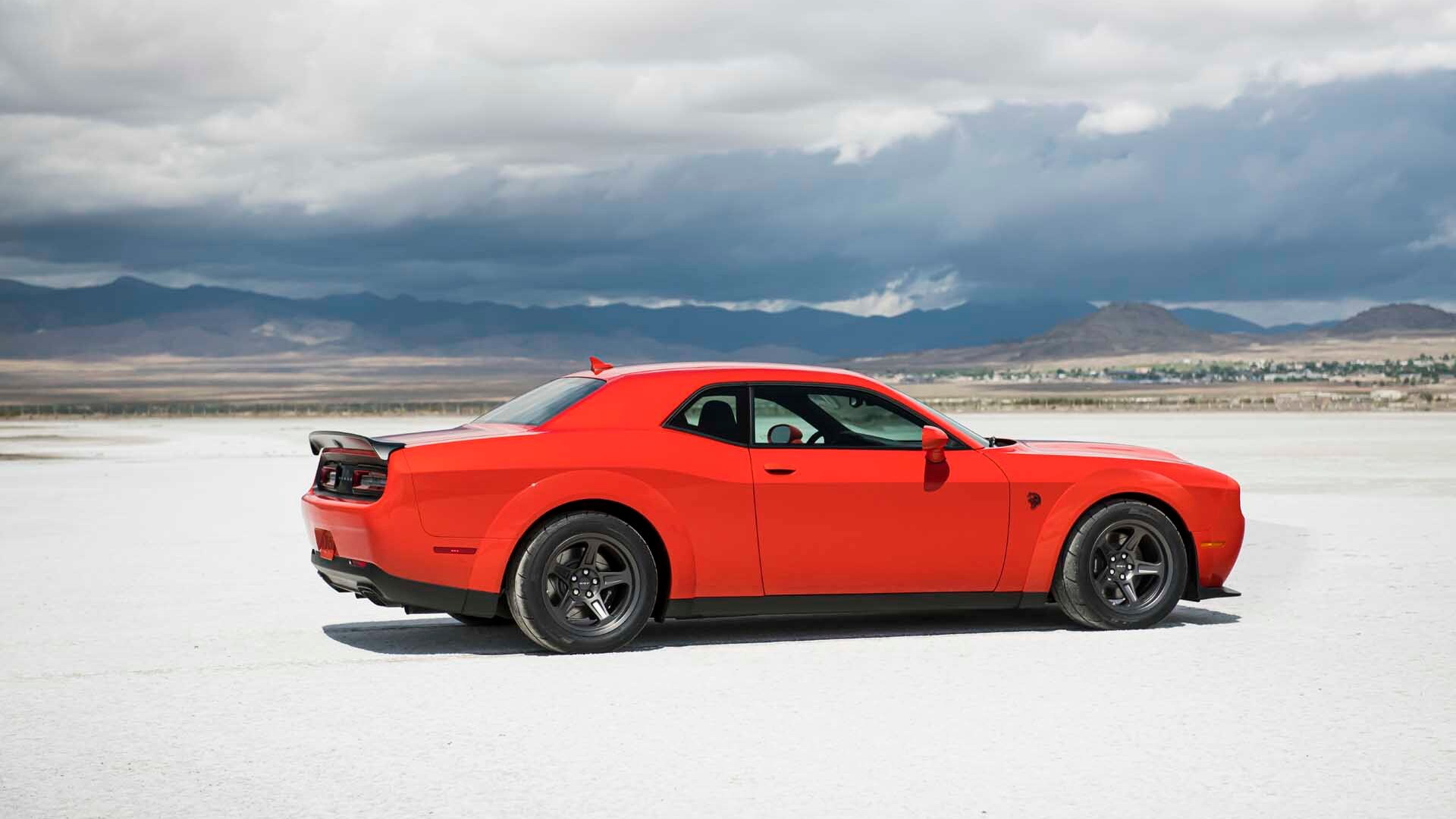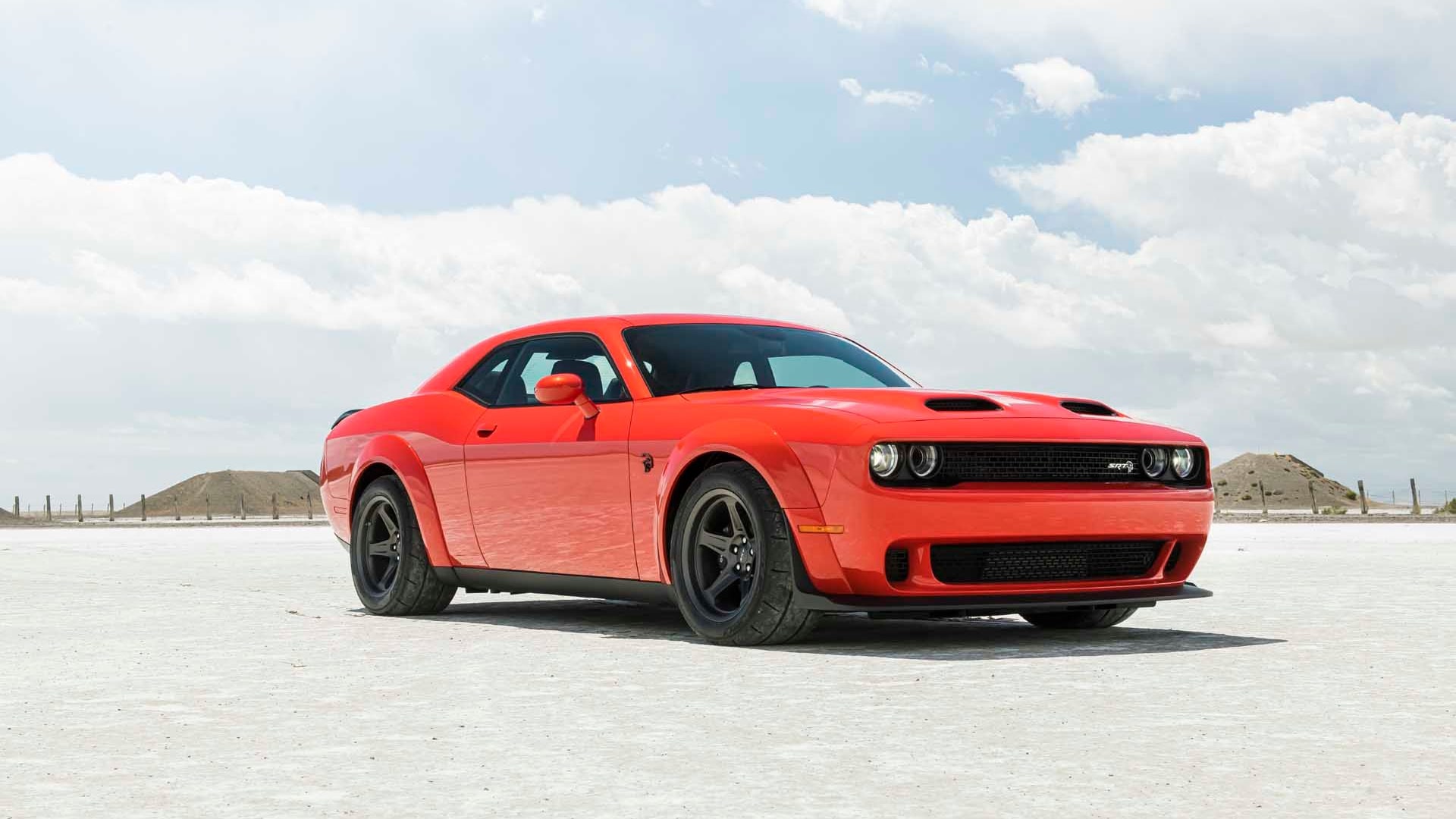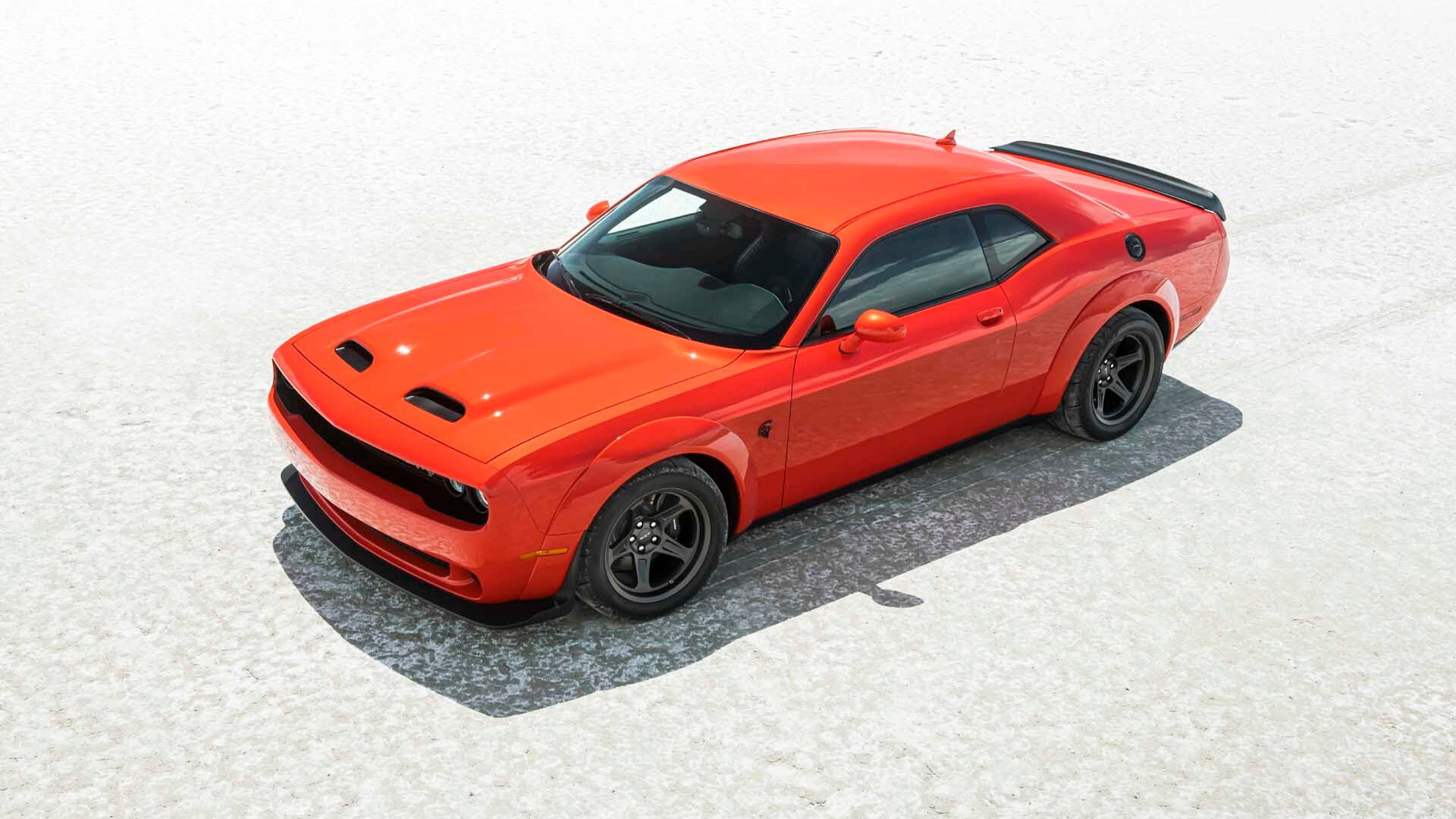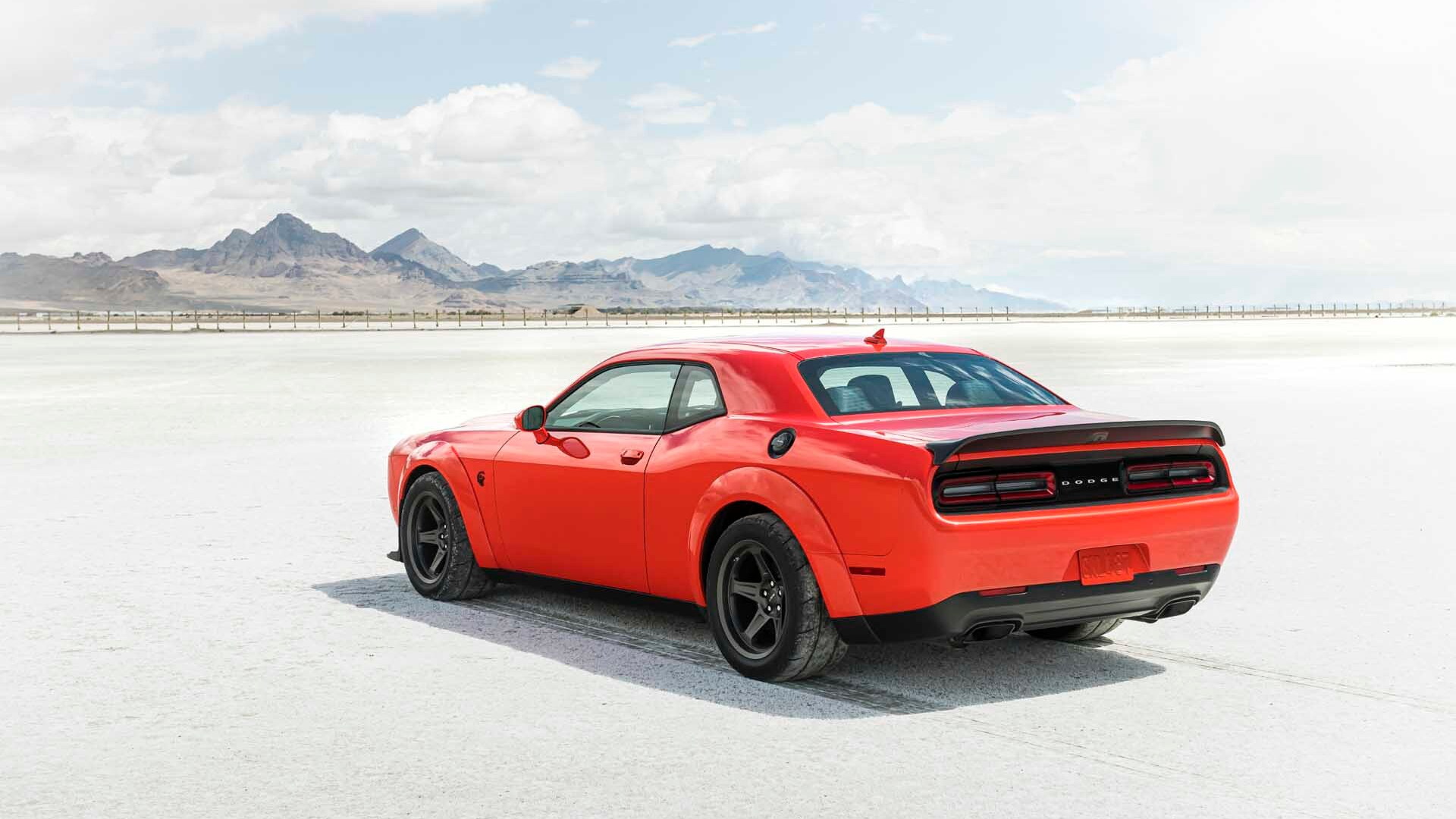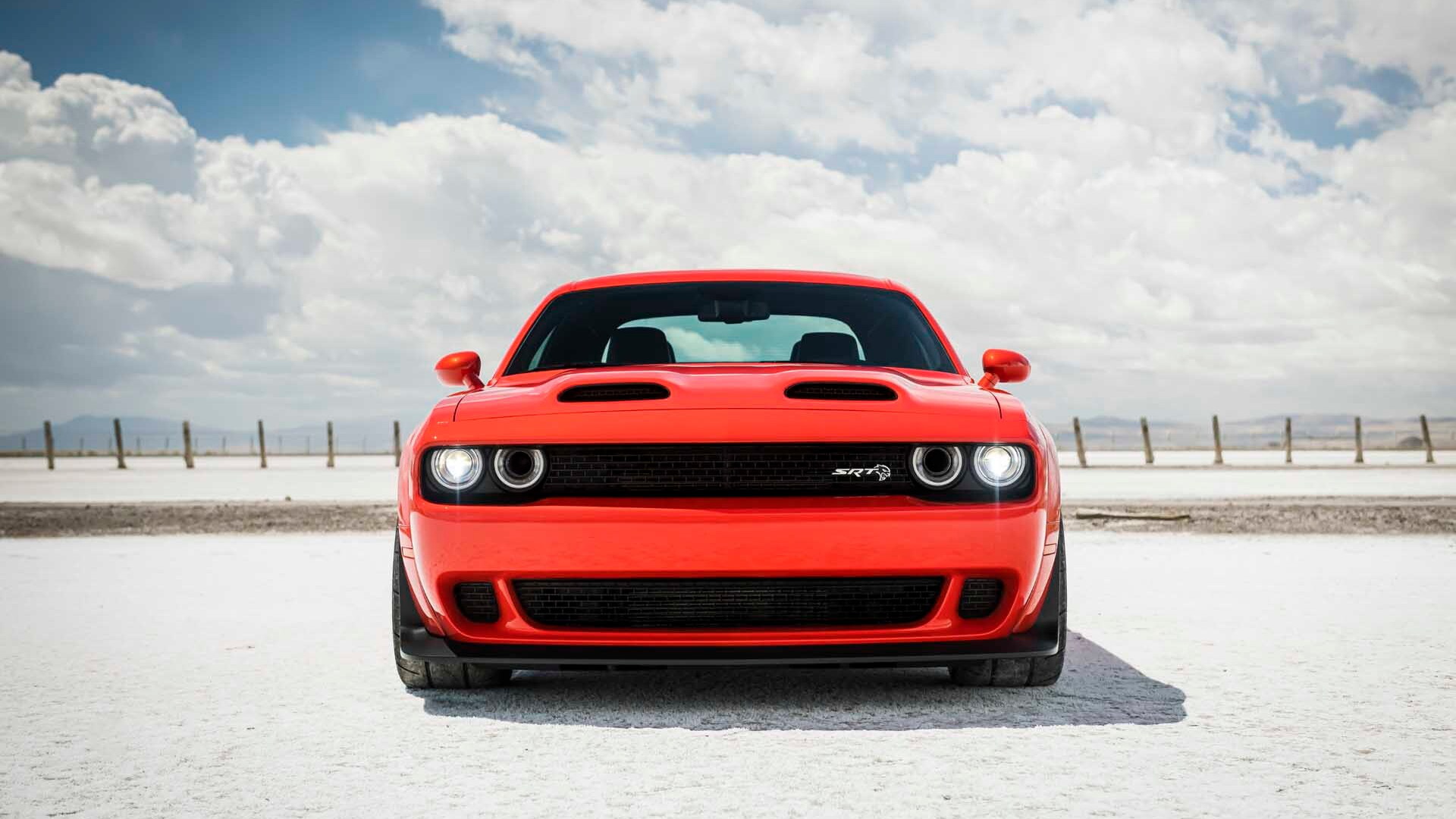Did you really think Dodge was done making iterations of the Challenger SRT Hellcat? Don’t be ridiculous.
The automaker that wants to sell only muscle cars in July shocked the muscle car world with the reveal of the 2020 Challenger SRT Super Stock, and on Thursday we learned the all-important pricing info. The new Challenger range-topper is priced from $81,090, including destination, and the order books open this month. The first examples will roll out of the Challenger's Brampton, Canada, plant this fall.
In case you've been living under a rock all summer, the Super Stock packs performance to rival 2018's Challenger SRT Demon, which was limited to just 3,300 units and priced from $84,390. Unlike the Demon, there's no limit on how many the Super Stock. It's available throughout the remainder of 2020 and will continue to be available in 2021.
This car is fast. Dodge hasn’t said exactly how much it weighs—spoiler, it’s not light—but it moves. It can sprint from 0-60 mph in 3.25 seconds, run the quarter mile in 10.50 seconds at 131 mph, and hit a tire-limited top speed of 168 mph.
The 6.2-liter supercharged V-8 that lurks in all Hellcats here uses the Demon’s 2.7-liter supercharger, which also appears in Hellcat Redeye models. However, in the Super Stock the engine makes an extra 10 horses for 807 horsepower and 707 pound-feet of torque. Power is sent to a 3.09 gear set in the limited-slip rear differential via an 8-speed automatic transmission. That’s on pump gas, not the good racing stuff.
To help create the extra power, Dodge recalibrated the engine and increased the redline 100 revs to 6,400 rpm.

2020 Dodge Challenger Super Stock

2020 Dodge Challenger Super Stock

2020 Dodge Challenger Super Stock
The power is great, but the Challenger Super Stock’s secret sauce is its tire and suspension setup, which aims to put the power to the pavement as efficiently as possible. “Spinning isn’t winning,” Tim Kuniskis, global head of Dodge and SRT, told Motor Authority at the car's reveal.
For better launches, Dodge retuned the adaptive Bilstein dampers and gave them three modes: Street, Sport, and Track. Dodge said going from Street to Sport firms up the ride, but mostly aims to provide more feel. Track mode takes all the rebound damping out of the front dampers to allow the weight to transfer to the back where it creates more grip.
The power is laid down by Nitto NT05R 315/40R18 drag radials on 18x11-inch aluminum wheels. If that combo sounds familiar that’s because it is. It’s the tire-and-wheel package used on the Demon, and it has lots of sidewall.

2020 Dodge Challenger Super Stock

2020 Dodge Challenger Super Stock

2020 Dodge Challenger Super Stock
Dodge also includes electronic goodies (some of which were developed for the Demon) aimed at drag-race duty on the Super Stock. They include launch assist, launch control, a line lock, a torque reserve, a race cooldown mode, and a power chiller. Meanwhile, stopping power comes courtesy of 4-piston fixed Brembo calipers at all four corners with 14.2-inch slotted rotors up front and 13.8-inch slotted rotors in back.
The result of all these changes? The 2020 Dodge Challenger SRT Super Stock will pull away from a Challenger SRT Hellcat Redeye by three car lengths in a race down the quarter-mile.
We'll point out that the Demon is still quicker in the quarter-mile, needing just 9.65 seconds. That's mainly due to the car's unique suspension designed to deliver more weight transfer and the trans brake that loads up the engine. You won't be able to buy all the Demon-exclusive goodies to install on the Super Stock. Dodge has made it clear it will only sell Demon parts to Demon owners.
